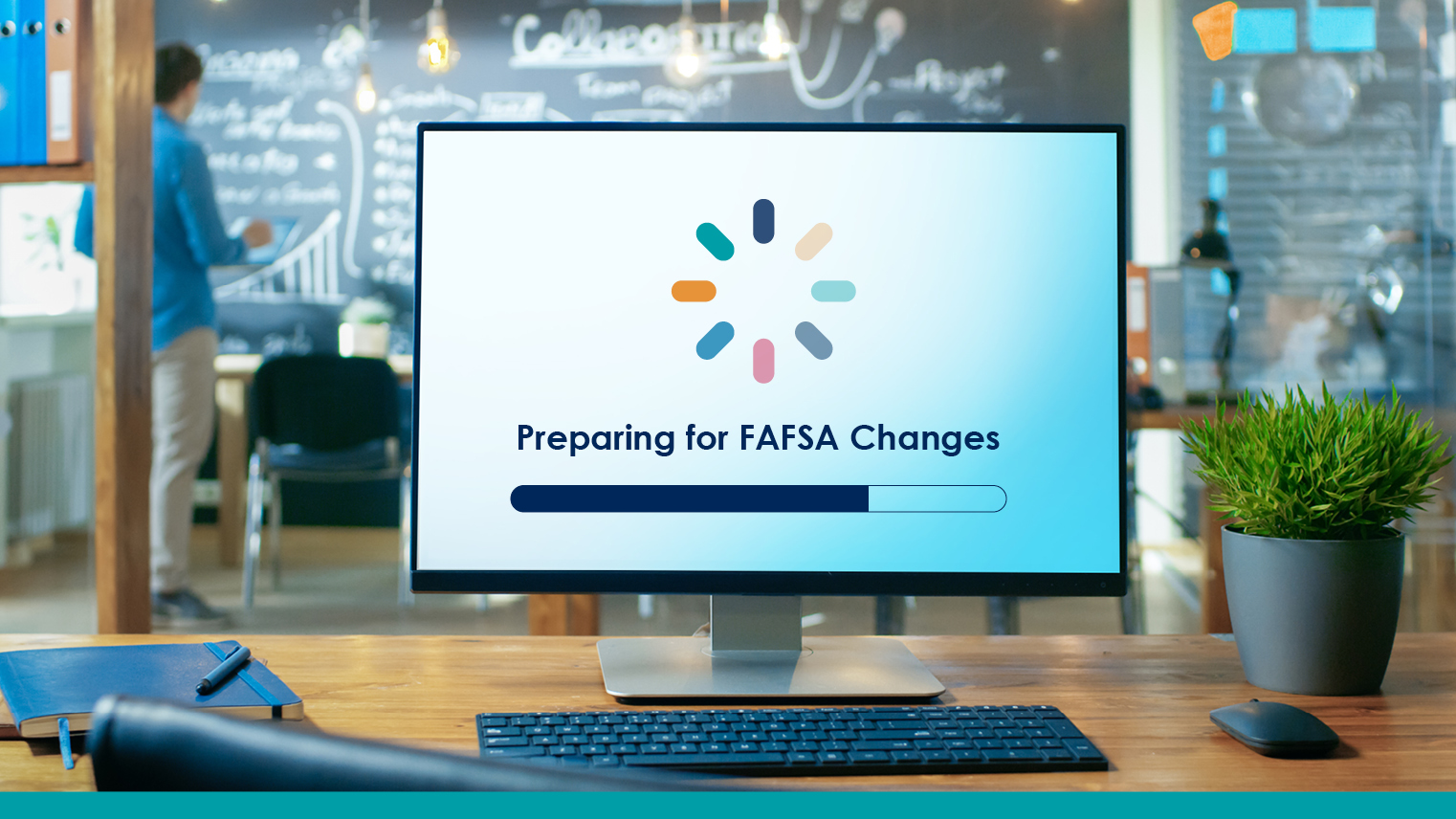It’s almost December! And while many people are preparing for holiday festivities, we’re thinking about FAFSA Simplification. Because in just a few short weeks, the new FAFSA will be available.
If you feel like you’re behind in your preparations, you’re not alone. In our recent “Ask the Experts” Q&A webinar, only 66% of respondents said they were mostly or totally on track with their preparations. Fourteen percent admitted they are not on track at all, and the remaining 21% don’t know if they are on track or not.
We get it. FAFSA Simplification is a big change, impacting your systems, your processes, and your staff. That’s why we’re sharing a set of resources to help you prepare for the changes coming your way.
Top Questions, Asked & Answered
We know that there’s a lot to consider when preparing for the upcoming FAFSA simplification. But the question remains: are you ready? If your answer is “maybe not,” don’t panic. We’re here to answer some of your most pressing questions.
In our recent Ask the Experts webinar, Sharon Clough, Regent Education’s Vice President of Financial Aid Compliance, answered a number of commonly-asked questions about the new FAFSA. Here are just a few of the questions she addressed:
Q: In this scenario, who is the parent when there is a stepparent and remarried mother, the student lives with the father who is not remarried, and the parents have 50/50 custody?
A: Starting in 2024/2025, you no longer look at the custodial parent (who the child lived with) when determining Parent of Record in cases where legal parents are neither married to each other or unmarried but living together. The key question now becomes which parent provided the most financial support in the last 12 months? If it is the same for both parents, then you must determine which parent has greater assets? Once you determine the Parent of Record, that parent (plus stepparent if remarried) would be contributors for the FAFSA. (NASFAA has requested clarification on some conflicting guidance as to whether the stepparent is required to participate if they filed a joint return with the Parent of Record for the base (2022) year).
Q: How are FAMs going to account for the PELL updates?
A: Your financial aid management system vendor should update your system with the following capabilities to receive and act on 2024/2025 ISIRs:
- Pell grant eligibility flag
- Maximum and minimum pell indicators
- Pell percent eligibility used and scheduled
In addition, they should also replace “enrollment level” with “enrollment intensity percentage” for calculating Pell payment period amounts. And depending on the system, they should accommodate interim calculations when corrections are made and automatic recalculations per school’s census date and other policies as data changes.
Q: How should we prepare our systems for changes to the 24-25 FAFSA?
A: First, start by confirming the roadmap for 24/25 ISIR support, Pell calculations, enrollment intensity percentage, and more with your FAM vendor. You should also ensure FTI will be labeled appropriately in your FAM, and address the impact to this field in other systems. You’ll also want to complete the new FTI-SAIG enrollment process.
Next, identify documents, awarding rules, or other items tied to ISIR data and plan for new 24/25 configurations and/or custom work. You should also anticipate changes in Pell and/or need and update institutional awarding policies and coding accordingly. And, you’ll need to identify and implement an approach for housing status and COA as housing status is no longer included on the FAFSA.
Finally, you’ll want to ensure your 2022 FWS data is correct and complete before reporting it to COD..
More Expert Advice On Demand
Hear more advice from Sharon by watching the full replay of the Ask the Experts webinar on-demand. In addition to the questions above, Sharon also addresses how to calculate a person’s Pell, new vs. old terminology related to the FAFSA, and a number of scenarios including how to deal with rejected FAFSAs for no signatures, verifying if a student is independent for being a veteran or a provisional independent, and best practices for work study earnings submissions.
And that’s not all. We received over 350 questions in advance of the webinar, and we (obviously!) couldn’t answer all of them in an hour. So we created an FAQ document that you can access here.
FAFSA Checklist
As financial aid professionals, we’re used to change. But the redesigned FAFSA is one of the most significant updates to the application in decades. The new FAFSA promises to simplify how students, parents, and institutions use the form, and it’s also going to change the way financial aid offices work, too.
At Regent Education, financial aid is all we do. We’re plugged into what’s going on in the industry so that we can support you not just with FAFSA Simplification, but with future regulatory changes, too. We consult regularly with the Department of Education and attend industry events such as NASFAA so that we have the latest information about the pending changes and anticipated impacts to our solutions. And we’ve put that knowledge to work for you. Download our FAFSA checklist featuring eight things you should do to prepare for the new FAFSA.
We know that preparing for FAFSA Simplification is stressful. But when you’re armed with the right knowledge, you can prepare your team - and your institution - for the changes ahead.
If you have questions about your options when it comes to financial aid, let’s schedule a time to chat. Our solutions are built for financial aid, providing you with the flexibility to automate the financial aid lifecycle across all enrollment models. They integrate with any SIS and provide the tools students need to make better borrowing decisions. Book a meeting today. We’d love to talk with you!


.jpg)

